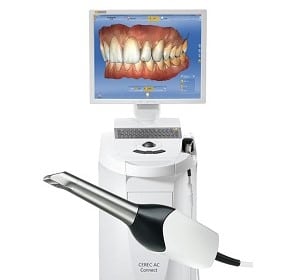Dental Implants
Available at our sister practice in Matamata - Applecross House Dentists
Dr Ankush and Dr Swati Bajaj comes to the practice weekly to see patients who would like to know more about implants. The surgery is done at our sister practice in Matamata once off and we will continue the treatment in Rotorua. Talk to us today to schedule an appointment.What is a Dental Implant?
Implant-supported replacement teeth feel, function and look very much like real teeth. Dental implants are by far the most durable, most long-lasting and most lifelike of all tooth replacement options.

What happens when teeth are missing?
Missing teeth can spoil your smile and make eating or speaking difficult. Remaining teeth may shift and in some cases, bone loss can occur around a missing tooth. The remaining teeth can start to lean and fall in towards the gap. Your natural teeth are held securely in place by their roots in the jawbone. Disease, decay, or trauma may lead to the loss of one or all of one’s teeth. The roots had previously stimulated the surrounding bone, maintaining the jaw’s natural shape. However, with no roots in place, the jawbone will begin to resorb or shrink, because it no longer serves the purpose that nature intended.
Our Dental Implant Procedure
Examination, CBCT & Cerec Scans
We start with a comprehensive full mouth examination, digital X-rays, a dental 3D CT scan and Cerec Scan. The scanned images provide high-resolution 3D 360-degree views of your teeth, jawbone and the surrounding structures. We uses these images and scans for precise treatment planning.
CBCT 3D Scan
A CBCT scan, or cone beam computed tomography scan, is a type of X-ray that uses a digital computer and a rotating machine that produces a cone-shaped X-ray. This way, the Dentist can see clear, 3-D images of tissues, blood vessels, nerves and bone. This is far beyond the abilities of a simple X-ray.

Cerec Scan
A Cerec Omnicam is a hand held wand like camera that scans the inside of a patients mouth creating a 3D digital impression of the patients mouth. It gives us precise imaging, colour & shade of a patients mouth allowing us to plan with precision.

Planning the procedure
Using the 3D images in special planning software, the Dentist maps out the exact position and angle of insertion of each implant. They take care to place implants where they will be stable and in the best position to support the replacement teeth. We also plan out any bone grafting needed to ensure the implants have strong bone support.
Surgical Guides to Ensure Accuracy of Placement
We manufacture and use a surgical guide to aid in efficient, accurate and minimally invasive implant placement. A surgical guide is a template that fits over the dental arch and marks exactly where and at what angle to place each implant.

The Surgery
The next step of the dental implants process is oral surgery, making small incisions into your gums and surgically place the dental implants. During this surgery, the dental implants will be rooted into place in the tooth gap. Following the surgery, a temporary replacement will be given such as a suck down splint or if you already have a partial plate to use. It’s important that patients follow our guide for post-operative care once the dental implant is in place.
The Healing Period
The most crucial step of getting the dental implants is the recovery period. During this 4-6 month period, the implants will fuse directly to the jawbone becoming one with the gum tissue and bone structure of your mouth, called osseointegration. This will allow the implant to become anchored and improve the stability for dental restorations.
Having an implant placed is a surgical procedure. And for that reason a local anesthetic is used and sedation is advised.
To find out more about Conscious Sedation
Abutment Placement
The second stage of surgical treatment is done 3 to 6 months after the implants have been placed. Implants are examined to be certain of their firmness and integration with the bone. A small connector will be attached to the implant, which will be used to attach a restoration on extension posts, or abutments.The abutment serves as the base for your new tooth.
Attachment of Restoration
One this is placed an impression of the abutment is taken and is used to create your permanent restoration. Some we are able to create the crown at the practice, but others will have to send it to an outside lab. Once the restoration is completed you can return to the office to attach the restoration permanently. Your smile will look just like it used to, and after a short period of getting used to the implant it will feel just like one of your own teeth.

Want more information?
If you have any further questions or queries, don’t hesitate to contact us.
Address
Lakes Care Dental
1172 Arawa Street
Rotorua
New Zealand
We are open Mon-Fri 8am-5pm.
Ample free parking
Wheelchair/scooter friendly access

We are members of the NZDA. New Zealand Dental Association, the professional association for New Zealand dentists.
As well as providing services for its members,, the NZDA is the one body able to speak on behalf of NZ dentistry as a whole.

We are very proud supporters of St John New Zealand, who provide an amazing service to our community.














